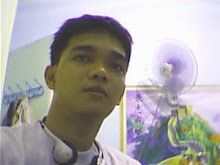If a railroad engineer runs a freight train, an electrical engineer builds electric circuits and a custodial engineer is --well, a janitor-- what then is a tissue engineer? Engineer is one of those English words that have gotten slippery in their application. The Middle English engin comes from the Latin root ingenium for natural ability, or genius. Natural abilities were somehow ascribed to machines, called engines, the operators or designers of which were called engineers. This confusion between the natural and the mechanical is getting worse. Tissue engineers, the subject of this article, are people that design and build bioartificial organs among other things. Bioartificial, a word with oxymoronic qualities, refers to synthetic organs that contain living cells or tissues. A bioartificial liver, for instance, is a device which contains liver cells to detoxify the blood of a patient, along with purely mechanical filters, tubes and pumps.
Tissue engineering, broadly defined, covers a large fraction of the problems that medical science encounters. It includes 1) inducing the patient's own body to regenerate damaged tissue; 2) replacing the patients' cells or organs with living tissue from other sources, or 3) implanting prosthetic devices, such as an artificial heart, which functionally replace living organs or tissues. Already, physicians have found ways to enhance the body's limited abilities in the regeneration of skin, bones, cartilage, and nerves. Bioartificial livers, pancreas, and kidneys are in various stages of clinical development. Robert Langer and Joseph Vacanti, among the visionary fathers of tissue engineering, imagine a future in which severed limbs could be fully regenerated, failed organs could be replaced with living, laboratory generated equivalents, blindness could be cured with microelectronic vision chips, and fetuses could be brought to term in artificial wombs. This is not a far out future but one that could be realized in 30-50 years, in their view, given recent advances in understanding of tissue and organ culture, and in synthesizing biocompatible materials.
Technology, like politics, is the art of the possible. Advances in science are a necessary but not sufficient condition for advancements in technology. Also necessary are commitments of time and money, cultural adjustments in attitude, and sometimes, enabling changes in the regulatory environment.
The delicate balancing act required for technological advance is demonstrated by a small biotechnology concern called Osteotech in its efforts to help bone surgeons. While bones have an inherent ability to repair themselves, particularly traumatic fractures or bone cancer can leave voids that are impossible to for the body to heal in a satisfactory fashion. Traditionally, these voids have been filled with grafts, usually from taken from the patient; for instance, a piece of the hip is often used in back surgery. This requires the pain and expense of a second operation, however, and in sometimes the patient is not an adequate self-donor. In that case, "allograft" tissue, (in this case, bone) from another human donor is used, usually from a cadaver. Osteotech slices, freezes, and packages human bone in sizes convenient for surgeons.
The main attribute of bone, its structural strength, also makes it a hard material to work with. For this reason, Osteotech supplies Grafton, which comes in flexible strips, as a gel, or even Grafton bone putty. Grafton is "demineralized bone matrix;" human bone that has been chopped up, freeze-dried, acid extracted and further processed into its various forms. Grafton, however, is not a product that Osteotech "sells" to end users, because, under U.S. law, human tissue cannot be bought or sold. Technically speaking, Osteotech "processes" human tissue for non-profit organizations, such as the Red Cross or the Musculoskeletal Foundation, which then distribute it to surgeons. Last year, the federal Food and Drug Administration introduced an additional complication when it considered at length whether Grafton should be regulated as a "medical device" , and hence under FDA control. To the considerable relief of Osteotech and its stockholders, the FDA eventually concluded that Grafton was a human tissue graft ( regulated by local institutional review boards (IRBs)), thus saving the years and expense that would have been required to obtain FDA approval. It is likely that Grafton might easily be replaced with bone matrix from non-human sources, such as cattle, at much lower expense. Ironically, such a product, by the same logic that the FDA applied to Grafton, would be considered a "xenograft" or a tissue donation of non-human origin, which the FDA now regulates in a recent extension of its powers. Therefore, we are unlikely to see such a non-human derived Grafton-like product marketed in the U.S. very soon, if ever.
cal devices" whi
No comments:
Post a Comment